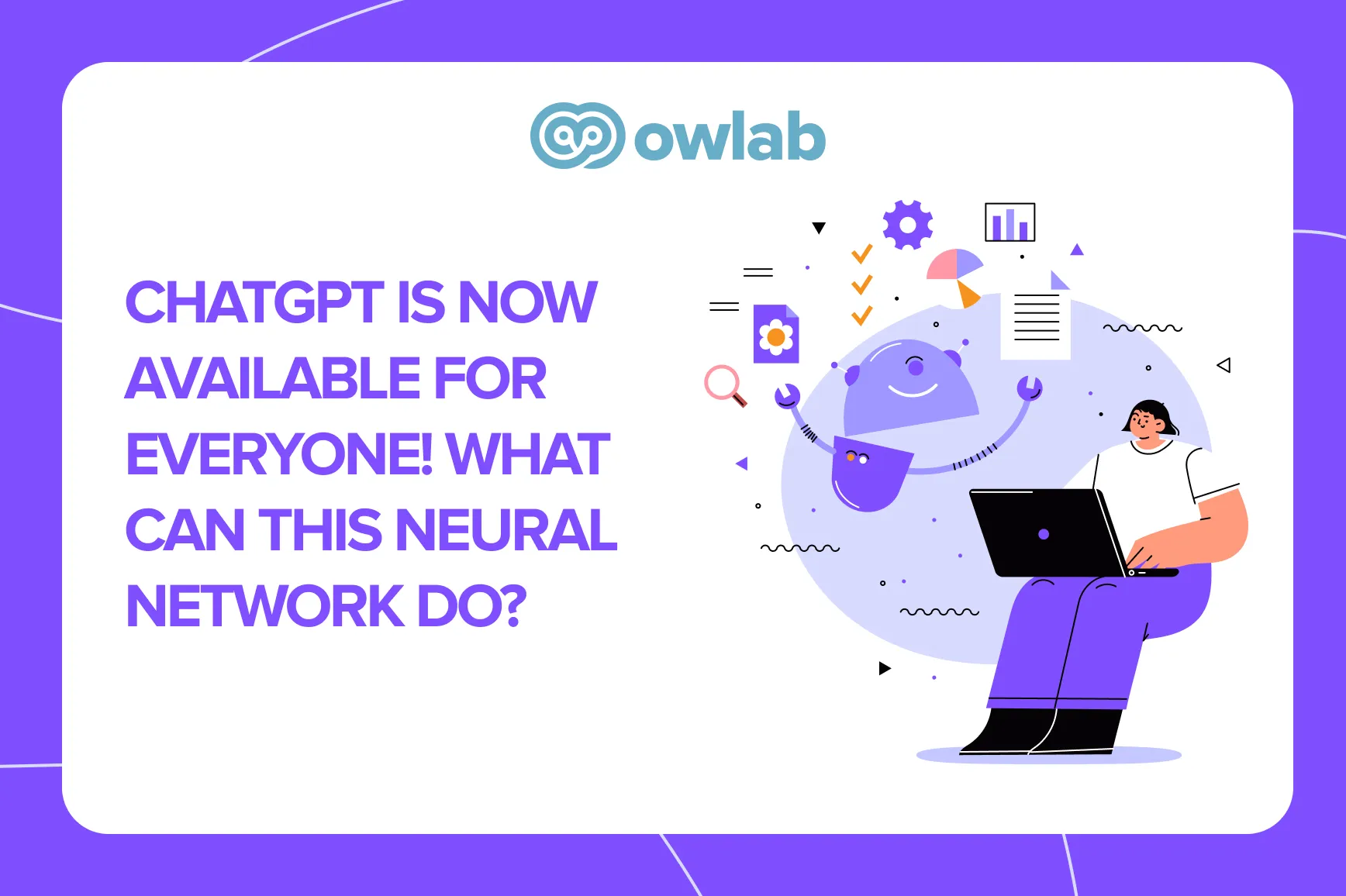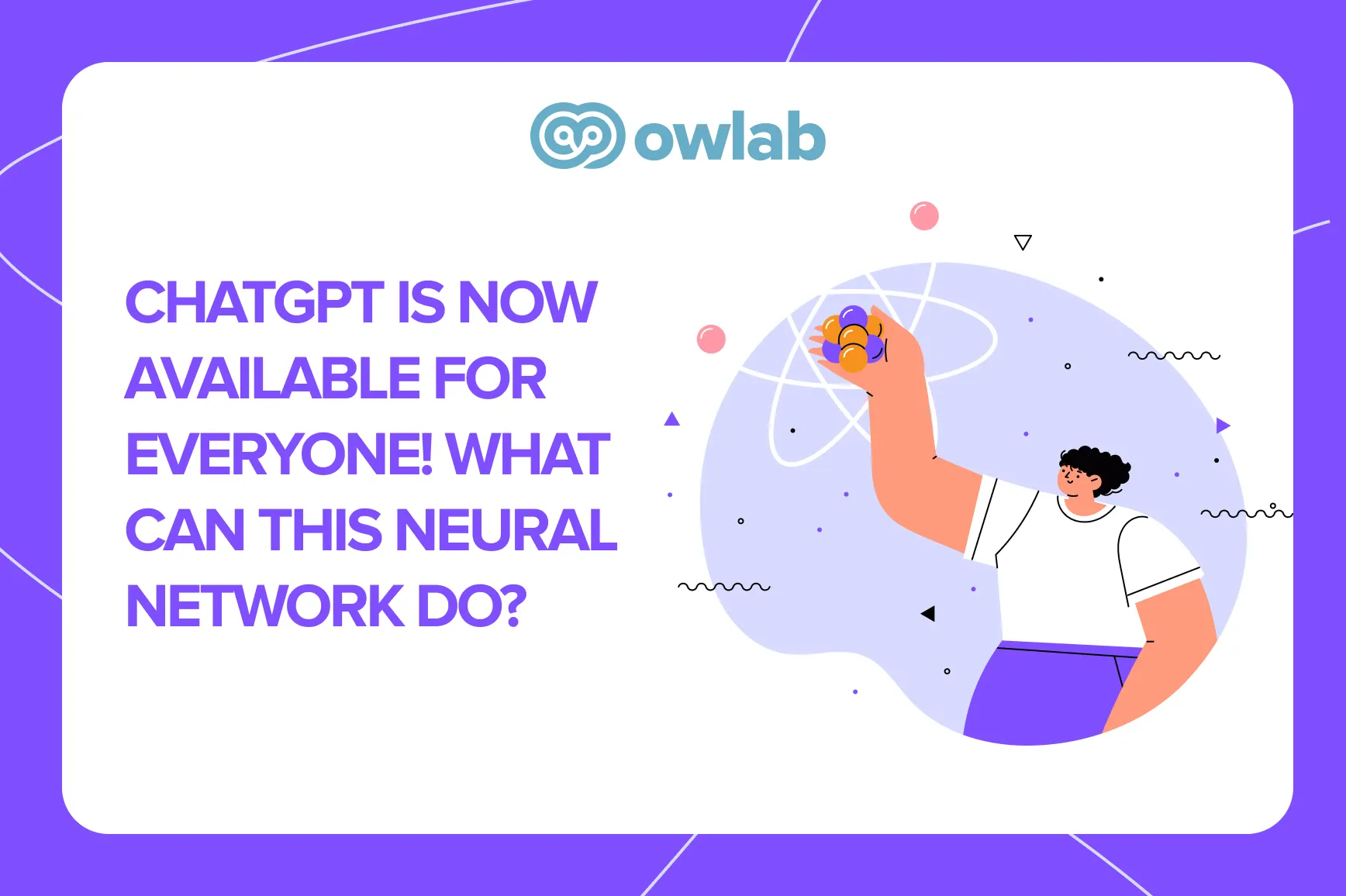Chatbots are gradually filling our lives, improving service industries and other niches. Chatbot development is gaining momentum, and what was recently science fiction is now becoming a reality.
OpenAI has released a ChatGPT chatbot that can answer questions, admit mistakes, argue, and reject inappropriate requests. In this article, you will learn what this neural network can do and how you can try it out yourself.
What is GPT-3?

GPT-3 (Generative Pre-trained Transformer 3) is the largest and most advanced language model in the world from OpenAI. This model is able to logically end the story, write detailed essays on a given topic, compose poetry and make translations.
The neural network belongs to the third generation of natural language processing models with the "transformer" architecture, which was introduced by researchers from Google Brain in 2017. Transformer generative networks, as well as language models with a different architecture, predict which word will appear in the text. Transformer networks do this much faster than their predecessors, while using less computing power. They are good at remembering complex relationships between words and are better than others at extracting the most important words from the context. It is on GPT-3 that ChatGPT runs.
ChatGPT - How Does it Work?
The developers created the model using reinforcement learning based on human feedback (RLHF). They used the same methods as InstructGPT, but with additional human dialogue data. To collect a dataset of conversations, the developers attracted the so-called trainers. They held conversations on behalf of a person and an AI assistant. Instructors also had access to simulated sentences to help them write responses.
For the reinforcement learning reward model, the team recorded conversations between a trainer and a chatbot. The team then randomly selected the AI-generated responses and asked the instructors to rank them. To improve the accuracy of the model, the developers used proximal policy optimization. For this process, they performed several iterations.
According to the developers, the model has a number of limitations. Despite plausible answers, ChatGPT is often wrong, sensitive to wording, overusing certain phrases, showing bias, and guessing context. However, the company said that the experience of deploying GPT-3 and Codex has improved the security of the model and reduced the number of invalid responses thanks to RLHF.
ChatGPT is available for free. The developers asked users to provide feedback on problematic model output, false positives of the external content filter that is part of the interface.
ChatGPT Access: How to Get Started?

It's all very simple! It will be enough to register on the OpenAI website and go to the ChatGPT page. You can sign up for the site with a Microsoft or Google account. You will also need a mobile phone number to register, but not all countries have access to OpenAI. But that's not a problem either! You can ask a friend who has a phone number for a suitable country to help you register. Or, as a last resort, use temporary mobile numbers, but this is not safe.
After registering, you can chat with the AI. Unlike its predecessors, GPT-3 remembers much more information and produces the most coherent and logical text. The language model has processed 600 gigabytes of text during training and now has 175 billion parameters - variables on which the accuracy of the system depends. Basically, GPT-3 was trained on various types of English-language data: the Common Crawl web archive with data from the Internet and a trillion words, articles from Wikipedia and the media, books, poems, sites on various topics.
GPT-3 can guess from the entered text what is expected of it. For example, finish a famous phrase, continue the logical sequence of the names of rock bands. She knows how to write indistinguishable (well, almost) from human texts. The context of the algorithm goes beyond the text that the user offers her. When generating a response, GPT-3 uses all the materials that it has read on the Internet. Therefore, she can write a long essay even if the user has only entered one word.
You can also connect GPT-3 to your own chatbot. OpenAI provides the API of its product, however, in order for everything to work, you need to have some programming skills. If you want to connect AI to your chatbot, you can contact us for help, because Owlab specializes in chatbot development.